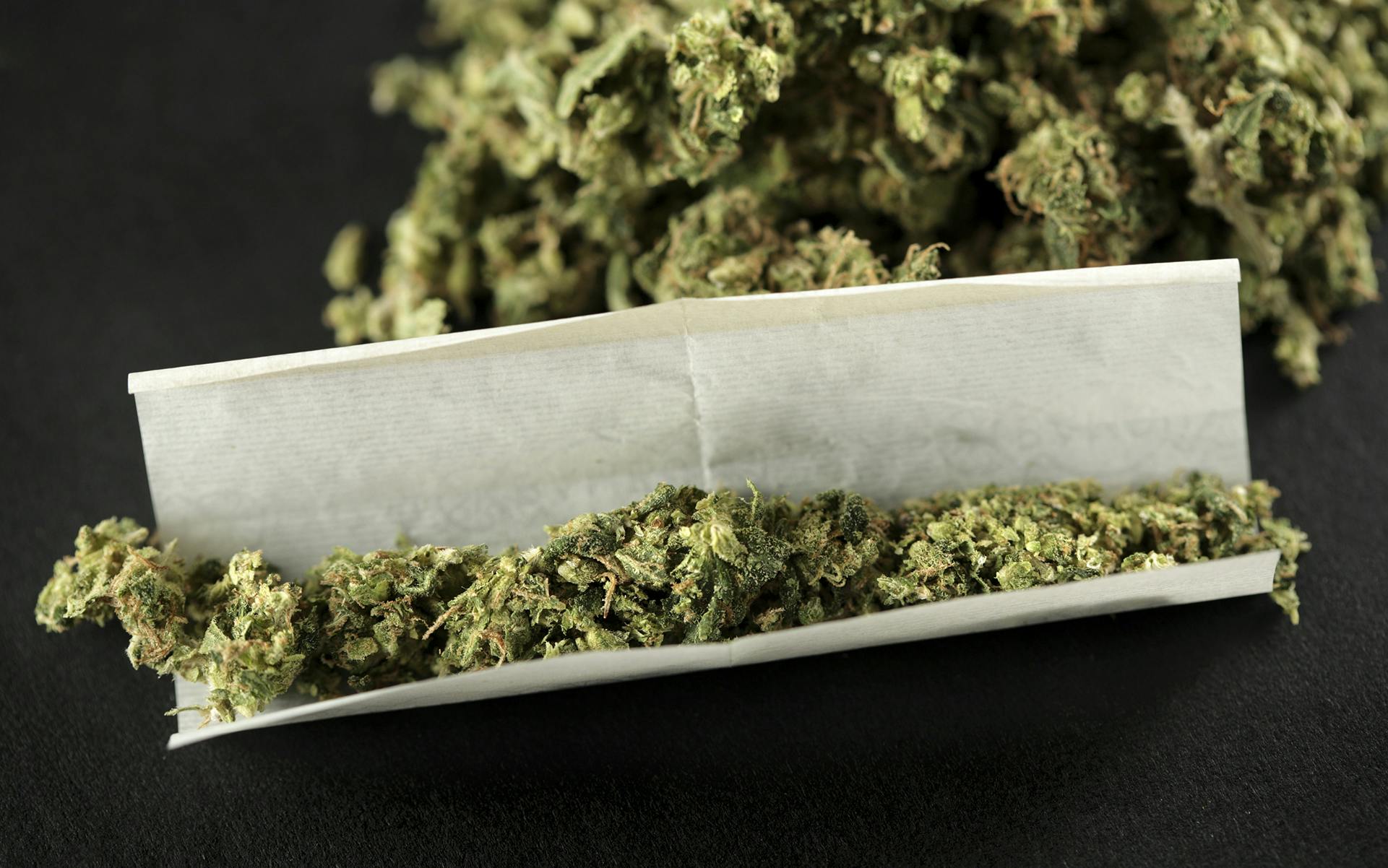In his classic essay Civil Disobedience, OG transcendentalist Henry David Thoreau wrote that “if a plant cannot live according to its nature, it dies; and so too a man.”
Thoreau didn’t have cannabis in mind, particularly, but his larger point—that it’s the sacred duty of all citizens to live according to our natures, and resist injustice, even if that involves breaking the law—certainly had a huge effect on the cannabis liberation movement. In fact, it’s very possible that over the last century, the global cannabis underground has engaged in the largest campaign of civil disobedience ever undertaken, at least in terms of the number of people actively participating. And this most senseless war is still far from over.
It’s very possible that over the last century, the global cannabis underground has engaged in the largest campaign of civil disobedience ever undertaken.
Somewhere in America right now, someone’s life is being needlessly disrupted by a cannabis arrest. The gears of that machine won’t stop turning until we legalize it everywhere, for everyone. In the meantime, our culture’s collective rap sheet tells a fascinating story. It’s a tale of authorities so crazed with power, so lacking in compassion, that they waged all-out war on a plant. It’s a story, too, of a resistance movement so vital and creative and determined that we beat them at their own game.
And so, here are some of the most famous and infamous busts that happened along the way.
Louis Armstrong

(Eddie Adams/AP)
The nation’s most famous, innovative, and revered jazz musician was also a devoted cannabis smoker. In fact, Louis Armstrong once referred to the herb he called gage as “an assistant and a friend.”
“You must see to it that I have special permission to smoke all the reefers that I want to when I want or I will just have to put this horn down, that’s all.”
Armstrong and his fellow vipers credited cannabis with stoking their creativity and enhancing their senses. “Satchmo” himself smoked two cigar-sized joints per day, especially favoring the herb before he performed, wrote music, or rehearsed.
One night in 1930, Armstrong was getting high with his drummer Vic Berton outside the Cotton Club in Culver City, California when things took an unfortunate turn, as he later recalled to his biographer.
“Vic and I were blasting this joint – having lots of laughs and feeling good, enjoying each other’s company. Just then two big healthy dicks [detectives] came from behind a car nonchalantly and said to us, ‘We’ll take the roach, boys.’”
Federal cannabis prohibition was still seven years away, but the devil’s lettuce had been outlawed in California in 1913. Surprisingly, it wasn’t the feds that set him up, but a rival bandleader turned “stoolie,” as the arresting officers admitted while taking Armstrong into custody. He spent nine days in jail, time he later said only hardened his conviction that cannabis should be not just legal, but widely celebrated, especially as an alternative to alcohol, which he saw as the ruin of many young jazz players.
As one of the world’s most famous entertainers, Armstrong’s words carried weight. So much that the feds did eventually target him for a bust, only they arrested his wife, on New Year’s Day in 1954, after discovering a small stash in her eyeglass case. In response, he wrote a defiant letter to his manager, saying, “You must see to it that I have special permission to smoke all the reefers that I want to when I want or I will just have to put this horn down, that’s all.”
Moses Baca
Much of what we thought we knew about the first American ever arrested under federal “marihuana” prohibition turns out to be wrong. As reported by Leafly in 2016, it wasn’t Samuel R. Caldwell, an unemployed laborer, who made history, as has been widely assumed. Two days prior to Caldwell’s arrest on October 3, 1937, 23-year-old Mexican-American Moses Baca got popped for possession of a quarter ounce.
Harry J. Anslinger, founding commissioner of the Federal Bureau of Narcotics and architect of federal cannabis prohibition, traveled by train to Denver to see both men tried and sentenced. After the judge handed down heavy jail sentences, calling cannabis “far worse than the use of morphine or coca,” and promising that the government “would enforce this new law to the letter,” Anslinger offered effusive praise for local prosecutors.
“These men have shown the way to other district attorneys throughout the nation,” he told the Denver Post. “Marijuana has become our greatest problem. Its sale and use has found its way into at least twenty-five states.”
Hate to tell you Harry, but cannabis has since found its way into exactly double that many states.
Robert Mitchum

(AP Photo)
During the Great Depression, like many unemployed and displaced young people, Robert Mitchum lived the life of a train-hopping hobo. Along the way he picked up a taste for cannabis, which the future movie star credited with quieting the boredom and discomfort of those endless box car nights spent riding the rails.
When Mitchum moved to Hollywood and made it big, he kept right on smoking. The good times came to a stop on August 31, 1948. That’s the night Mitchum and a friend were blazing a joint with a couple of young actresses up in Laurel Canyon. Police raided through the back door, catching them in the act. Mitchum later pleaded not guilty to cannabis possession, but was convicted and sentenced to two years’ probation, with two months of that served in prison.
The scandal turned into a media sensation, only not in the way the drug warriors who’d targeted Mitchum hoped. With a little help from Howard Hughes, then head of RKO studios (where Mitchum was under contract), the incident was used to burnish the actor’s bad-boy image, making him an even bigger box office draw when let out of prison than he was before getting busted.
Timothy Leary
Best known as a psychedelics advocate who advised the nation’s young people to “tune in, turn on, and drop out” while serving as a professor at Harvard University, Timothy Leary so frightened the powers-that-be back in the day that President Nixon declared him “the most dangerous man in America.”
But while he got high on his own supply of everything from LSD to magic mushrooms, Leary managed to avoid arrest until Dec. 22, 1965. That’s when, while driving across the Mexican border on a family vacation, a customs search of his car turned up four ounces of cannabis. Leary was convicted of possession under federal law, but appealed on the grounds that the Marijuana Tax Act forced him to incriminate himself.
Leary v. United States eventually reached the U.S. Supreme Court, which ruled unanimously in Leary’s favor, striking down the Marijuana Tax Act as unconstitutional. Congress reacted quickly, replacing prohibition’s founding document with the Controlled Substances Act, which remains the underpinning of federal cannabis prohibition today.
And soon after that, Leary got busted again, for two joints that he said were planted on him. This time he got a 20-year sentence, but, with the help of the Weather Underground, he managed to escape in less than a year.
It’s quite a story.
John Sinclair
In 1969, John Sinclair—poet, political agitator, and manager of the Detroit rock band MC5—was arrested in an undercover police sting that targeted him because of his political beliefs. Two undercover police officers spent months infiltrating Sinclair’s inner circle before he finally handed them two joints, which brought down a sentence of 10 years in prison.
Two undercover police officers spent months infiltrating Sinclair’s inner circle before he finally handed them two joints, which brought down a sentence of 10 years in prison.
John Lennon wrote a song about the injustice of it all, and in December of 1971 the ex-Beatle headlined a John Sinclair Freedom Rally in Ann Arbor, Michigan. Three days later, Sinclair walked out of prison (after serving two years). Citing the “cruel and unusual punishment” meted out against him, the Michigan Supreme Court went so far as to rule the state’s laws against cannabis unconstitutional.
The following April, the first Hash Bash went down on the University of Michigan Diag in Ann Arbor. The event was a celebration of Sinclair’s release and a call to push back against prohibition. Eventually, in the face of ongoing protests and political pressure, Ann Arbor would lower the penalty for possession to a $5 fine.
Robert Platshorn
The case against Robert Platshorn and his “Black Tuna Gang” sprung out of Operation Banco, the newly-formed DEA’s first attempt to investigate cannabis smuggling.
The operation burned through a lot of taxpayer money in the late 1970s delving into the drug trade in South Florida, only to see the big fish always slip through their nets. When the operation failed to notch a single high-profile prosecution, I.R.S. and U.S. Customs officials launched investigations of their own—into the failures of Operation Banco. What came next was fairly obvious. Somebody had to go down, hard.
So when U.S. Attorney General Griffin Bell announced the arrests at a national press conference in 1978, he called the Black Tuna Gang the “biggest and slickest” cannabis smuggling ring in U.S. history. Prosecutors used the Racketeering Influenced Corrupt Organizations (RICO) Act to nail Platshorn with a horrific sentence—64 years. Platshorn spent almost 30 years behind bars, earning the distinction of being America’s longest-serving cannabis prisoner.
Set free at last in 2008, he self-published his memoir Black Tuna Diaries, and set off on The Silver Tour, a series of informational seminars on medical cannabis held at retirement communities near his South Florida home. The Silver Tour eventually grew into a full-fledged activism organization, one that played a leading role in helping to pass Florida’s medical cannabis law in 2016.
Platshorn remains a tireless advocate today, encouraging seniors to not only support medical marijuana as a political cause, but to try it themselves.
Brownie Mary
In the 1970s, a woman named Mary Jane Rathbun decided to start selling her “magically delicious” pot brownies as a way to share her love of cannabis and supplement her income as an IHOP waitress. Soon business was booming, with Mary baking several dozen brownies every day to keep up with demand. A grandmotherly figure with curly gray hair, a kind-hearted disposition, and a sailor’s vocabulary, she quickly became a beloved figure in the Castro, San Francisco’s predominantly gay neighborhood. Even before the AIDS crisis hit, she served as a kind of mother figure to countless young people who’d left their families behind in pursuit of a community that accepted them and celebrated their lifestyle.
The police got involved in 1981, when the SFPD raided her apartment. Despite two further arrests, she never stopped baking.
As the AIDS crisis hit the city in the early 1980s, Rathbun quickly noticed two things: the disease disproportionately affected young gay men, and cannabis proved effective in combating some of their symptoms and restoring their appetites. So she began volunteering as a nurse’s assistant. While making the rounds in local AIDS and cancer wards, she made her brownies available to patients for free.
The police got involved in 1981, when the SFPD raided her apartment. The raid yielded 18 pounds of cannabis and led to a court date for the 57-year-old edibles impresario, who was hailed as the Florence Nightingale of medical marijuana. Despite two further arrests, she never stopped baking.
In 1986, San Francisco General Hospital named her Volunteer of the Year. At the same time she worked with friend and fellow cannabis activist Denis Peron on Proposition P, a citywide medical marijuana ordinance that passed in 1991. That campaign eventually led to the passage of California’s Prop 215, the first statewide medical cannabis law, in 1996.

Valerie Corral
In the 1970s, Valerie Corral and her then husband Mike discovered that cannabis helped control Valerie’s debilitating seizures without the serious side effects of pharmaceutical drugs. In 1992, the couple was arrested for cultivating their own supply of cannabis. Rather than pleading guilty, they challenged the law, using the defense of medical necessity. Prosecutors eventually dropped the case, realizing they’d never win a conviction in the liberal enclave of Santa Cruz, California. After a second arrest and another legal escape, Valerie and Mike created a collective to help others facing the same struggle accessing medical cannabis.
With the support of the local authorities, the Wo/Men’s Alliance for Medical Marijuana (WAMM) would play a leading role in the passage of California’s Prop 215. WAMM grew into a “gold standard” model of a compassionate collective, with cannabis provided on a sliding scale to those in need.
In 2002, dozens of DEA officers raided WAMM’s garden and arrested the Corrals. Facing federal charges, they stood their ground. Two weeks after the raid, on the steps of City Hall, with the mayor of Santa Cruz by their side, WAMM distributed medical cannabis to its terminally ill members, daring the DEA to arrest them again—this time in front of a huge media presence. When the DEA failed to show up, WAMM successfully sued the Department of Justice with help from the ACLU, creating an important victory for the medical cannabis movement at a time when raids and arrests remained commonplace.
Matthew McConaughey

(Photo by Chris Pizzello/Invision/AP)
Ready for a little comic relief?
How about the night in 1999 when actor Matthew McConaughey got arrested for smoking pot while fully nude and banging on his bongos (the musical instrument!) in the middle of the night? McConaughey spent nine hours in county jail before he was released on $1,000 bond. The drug charges were eventually dropped.
“What’s wrong with beating your drums in your birthday suit?” McConaughey asked in a Playboy interview years later. “I have no regrets about the way I got there.”
Tommy Chong
When the federal government unleashed Operation Pipe Dreams in 2003, they charged 55 people with federal crimes. Only one went to prison: Tommy Chong.
It’s no coincidence that Chong took the fall. As the even-stonier-half of Cheech and Chong, he’d spent the 1970s getting famous and earning millions by making the authorities look like idiots while using biting satire to expose their war on cannabis as a failure and a farce. So when his “smoking accessory” company got caught up in a nationwide enforcement sweep, the opportunity to exact revenge proved too tempting for federal prosecutors to resist.
Chong’s ensuing trial and nine-month incarceration was intended to send a PR message. Which it did—but not the one the drug warriors intended. Instead, most Americans wondered why taxpayer money was being spent putting a comedian in jail for selling pipes.
Eddy Lepp and Heidi Grossman-Lepp
This story is too long and complex to encapsulate here—and more importantly, Leafly contributor Peter Hecht already wrote a deep-dive par excellence on this still ongoing saga. So to stoke your interest, and incentivize you to go ahead and click that link, here’s two completely out of context lines from Hecht’s article:
At its height in the early 2000s, Eddy Lepp’s farm boasted 32,524 cannabis plants.
“This is Reverend Heidi,” she told a sheriff’s dispatcher. “We have a madman who has a gun and he is desecrating our property.”
Shona Banda
In 2010, Shona Banda, a massage therapist working out of a health food store in Garden City, Kansas, discovered that cannabis worked wonders for treating the symptoms of her debilitating Crohn’s disease. Her cannabis oil use led her to become a cannabis activist, which is a tough thing to be in Kansas.
In 2015, when her fifth-grade son was confronted with a day of “Reefer Madness” drug education at school, he decided to offer some actual facts about cannabis: his mom used it as medicine, and she no longer felt sick all the time. School officials contacted local authorities, who dispatched police and social workers to the Banda house. A search of the home turned up an ounce of cannabis oil. She was arrested and her son was taken into protective custody.
Facing the threat of serious prison time and loss of her child, Banda refused to back down. She fought the charges at every turn. In August 2017, she at last pleaded no contest to possession of drug paraphernalia with intent to manufacture. As part of her plea agreement, all other charges were dropped, and she was sentenced to 12 months of “mail-in probation,” allowing her to complete probation while living in the legalized state of Washington.
Michael Brown
In addition to all the millions of people arrested for cannabis, there’s also been countless times when cannabis use (or suspicion of use) has been used by authorities to either justify the onset of an abusive police encounter, or to later discredit the victim of one—particularly when attempting to smear the reputations of young people of color like Michael Brown.
As the media and the public began to focus on the case and its aftermath, the authorities countered this emerging narrative by selectively leaking information about Brown’s cannabis use.
Brown, an unarmed teenager, was shot to death by police in Ferguson, Missouri in 2014, his lifeless body left for four hours in the street. The case led to large and sustained street protests, focusing national attention on a local police force and court system that the Department of Justice later accused of widespread corruption that “exacerbated racial bias” and “undermined law enforcement legitimacy among African Americans in particular.”
As the media and the public began to focus on the case and its aftermath, the authorities countered this emerging narrative by selectively leaking information about Brown’s cannabis use, claiming he was involved in a “drug deal” on the day of his death, and noting that he was wearing socks with marijuana leaves on them when shot and killed.
So did cannabis cause Michael Brown to get shot by a police officer? No. But cannabis definitely played a role in how the establishment sought to turn the victims of police misconduct into targets of suspicion and fear. Remember, the war on cannabis is not about cannabis—it’s about war.
Lead and flood photos by AP






